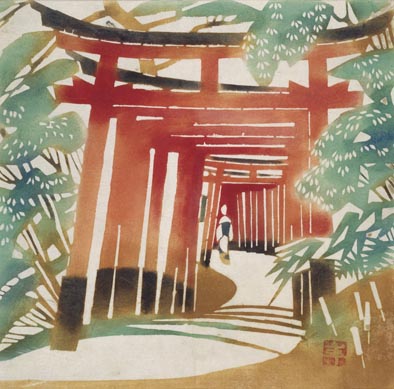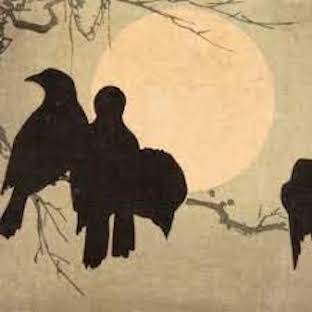Japanese Art and Flow of Time
Lee Jay Walker
Modern Tokyo Times

Inagaki Toshijiro (1902–1963) was born in Kyoto, a city where beauty lingers in every brushstroke of tradition and the air hums with centuries of artistry. From this cradle of refinement emerged a creator whose hands spoke the language of dye and cloth. Inagaki devoted his life to katazome—the time-honored Japanese art of stencil dyeing—where patterns are not merely printed but breathed into fabric through layers of resist paste and color. His work transcended craft; each textile shimmered with quiet harmony, embodying Kyoto’s spirit of balance between discipline and grace.
In the later years of his life, Inagaki Toshijiro shared his quiet mastery as a professor at the Kyoto Municipal College of Fine Arts. Within those serene halls, he became both mentor and muse, guiding young artists to see beauty not as ornament but as spirit made visible. Through his gentle instruction and unwavering devotion to craft, he planted seeds of artistry that would bloom long after his passing—an enduring legacy woven into the very fabric of Kyoto’s creative soul.

Sakai Hōitsu (1761–1829), one of the luminous figures of the Edo period, wove threads of culture, spirit, and nature into a seamless tapestry of art. A painter of profound sensitivity, he transformed traditional motifs into meditations on transience and renewal. In his later years, as he embraced the life of a Buddhist monk, his brush seemed to breathe with quiet enlightenment.
Through his delicate visions of the four seasons—blossoms unfurling, rains whispering, leaves burning, snow falling—Hōitsu revealed not only the rhythm of nature, but the pulse of the soul within it. His art became a prayer in color and form, magnifying the beauty of impermanence as though sunlight itself had taken shape upon the silk.

In her latest creation, contemporary Japanese artist Sawako Utsumi offers a tender yet profound homage to the timeless elegance of Kamisaka Sekka (1866–1942). Unlike earlier reinterpretations that boldly departed from the master’s vision, this work takes a quieter path—one of reverence and restraint. Utsumi shifts only the inclination of the stems and the breath of color, exchanging Sekka’s luminous palette for a dusky harmony of deep green and soft violet. Yet within these subtle variations unfolds a quiet transformation.
For Utsumi, the horizon—and the flora that grace its edge—exists not as a fixed boundary, but as a mirage shaped by perception and feeling. Her gentle reimagining suggests that even when beholding the same vista, no two hearts perceive it alike. Between lovers, friends, or passing strangers, closeness does not promise shared emotion; each gaze uncovers its own constellation of serenity, yearning, or escape within the fading light.
Thus, while her alterations appear delicate—almost imperceptible—the emotional cadence is entirely her own. Utsumi’s restrained dialogue with Sekka invites contemplation not only of aesthetic nuance, but of the mutable landscapes of the soul. In this whispered conversation between past and present, master and muse, she conjures a work imbued with mysticism, subtle grace, and introspection—a poetic meditation on the nature of seeing itself.
https://fineartamerica.com/featured/the-horizon-and-the-tranquility-of-the-mind-sawako-utsumi.html The Horizon and the Tranquility of the Mind
http://sawakoart.com Sawako Utsumi and her website

Modern Tokyo News is part of the Modern Tokyo Times group
http://moderntokyotimes.com Modern Tokyo Times – International News and Japan News
http://sawakoart.com – Sawako Utsumi and her website – Modern Tokyo Times artist
https://moderntokyonews.com Modern Tokyo News – Tokyo News and International News
PLEASE JOIN ON TWITTER
https://twitter.com/MTT_News Modern Tokyo Times
PLEASE JOIN ON FACEBOOK